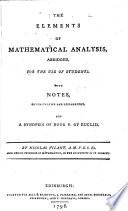 | Nicolas Vilant - 1798 - 196 pages
...all degrees to be produced by a multiplication of binomial factors. Every affefted equation will have as many roots as there are units in the exponent of the higheft power of the variable quantity ; and, if the terms of the equation are alternately affirmative... | |
 | Charles Hutton - 1811 - 424 pages
...cannot be equal to nothing. There are therefore, in the proposed equation, four roots or values of r ; and that which characterizes these roots is, that...It must be observed that we cannot have all at once x = at x = b, x — c, &c, for the roots of the equation; but that the particular equations x — a... | |
 | Charles Hutton - 1811 - 404 pages
...that which characterizes these roots is, that on substituting each of them successively instead of .r, the aggregate of the terms of the equation vanishes...It must be observed that we cannot have all at once .r = <z, x = b, .r — c, &c, for the roots of the equation; but that the particular equations x —... | |
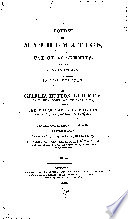 | Charles Hutton - 1822 - 680 pages
...instead of x, the aggregate of the terms of the equation vanishes by the opposition of the sighs + and—. The preceding equation is only of the fourth...It must be observed that we cannot have all at once x ' = o, x = b> x = c, &q. for the roots of the equation ; but that the particular equations x .-*... | |
 | 1823 - 876 pages
...degree may be considered as proekiced by the multiplication of аз many simple equations ns there arc units in the exponent of the highest power of the unknown quantity. From this he deduced the relation which exists bctw en the roots of an equation, and the coefficients... | |
 | Charles Davies - 1835 - 378 pages
...law should be remembered. Second Property. 264. Every equation involving but one unknown quantity, has as many roots as there are units in the exponent of its degree, and no more. Let the proposed equation be if+Par-i+Q«" 3+ • • . +Tx+\J=0. Since every... | |
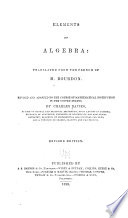 | 1838 - 372 pages
...law should be remembered. Second Property. 281. Every equation involving but one unknown quantity, has as many roots as there are units in the exponent of its degree, and no more. Let the proposed equation be xn+Pxm~l+Q.xm-2+ . . . +Ta;+U=0. Since every... | |
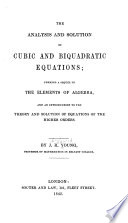 | John Radford Young - 1842 - 276 pages
...all arranged on one side, the polynomial we thus get is composed of as many simple binomial factors as there are units in the exponent of the highest power of the unknown quantity. The discovery of these factors would he the discovery of the roots of the equation, since these are... | |
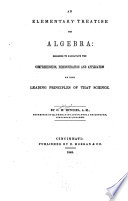 | Ormsby MacKnight Mitchel - 1845 - 308 pages
...on of the divisors of all degrees. 234. As an exemplification of the principle, that every equation has as many roots as there are units in the exponent of the highest power of the unknown quantity, we propose to examine the equation xm—! =0. Let us commence by making m=2, and we have x2 — 1=0By... | |
 | Horatio Nelson Robinson - 1848 - 354 pages
...to 0, at the same time, the equation becomes x2-\-r=0, a binomial equation. Every binomial equation has as many roots as there are units in the exponent of the unknown quantity. Thus 0^+8=0, and a;»— 8=0, or r'+l=0, and a? — 1=0, &c., are equations which... | |
| |